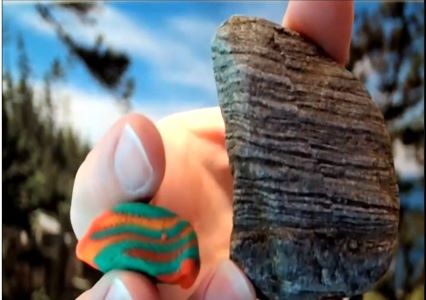Last updated: March 30, 2022
Lesson Plan
Acadia Rock Identification

- Grade Level:
- Upper Elementary: Third Grade through Fifth Grade
- Subject:
- Science
- Lesson Duration:
- 60 Minutes
- Additional Standards:
- ESS2.A: Earth Materials and Systems
Analyzing and Interpreting Data
Engaging in argument with Evidence - Thinking Skills:
- Remembering: Recalling or recognizing information ideas, and principles. Applying: Apply an abstract idea in a concrete situation to solve a problem or relate it to a prior experience.
Essential Question
What types of rocks do we find on our coastal beaches of Mount Desert Island?
How can we identify and classify these rocks?
Objective
Students will make thoughtful scientific observations
Students will ask questions and seek answers
Students will learn about classifying rocks
Students will learn about types of rocks and the rock cycle
Preparation
Teachers need to be sure to have egg cartoons for each student or small group Students should be familiar with rock types and the rock cycle, teachers may want to print and laminate pictures below to have as a reference while at the site.
The teacher should prepare the rock types in chocolate activity.
Materials
Students will make observations of rocks along the shore of Mount Desert Island (site to be determined by teacher). Students will categorize rocks, and will use resources to identify types of rocks. Students will create a journal entry with drawing and description so work can be continued in the classroom without the rock sample.
Download Rock Sort Lesson Plan
Procedure
Engage:
During a visit to a rocky shore this is a great opportunity to share some geological history of Mount Desert Island. The background information above could be helpful or this could be tweaked to your specific location or a more broad overview of the types of rocks that can be found on MDI.
Explore:
During a trip to a rocky shore students are encouraged to explore the shore. While exploring students will collect twelve rock samples. Students will be asked to group their rocks into categories of their choosing. They may decide to group based on color, texture, type of rock etc. They will then join a small group and describe their rock collection and how they have been categorized.
Explanation:
Activity 1:Observations
Students will write journal entries about their rock sort and the rock (or rocks) they are choosing to identify. Students will include pictures, detailed drawings and descriptions because the rocks will remain at the beach.
Activity 2: Rock Types in Chocolate
(Back at the classroom)Using the rock types in Chocolate activity to help describe to students the difference between rock types. What features would they be looking for when identifying their rock type.
Activity 3: Rock Identification and CER
Using the provided checklist, rock samples, and other materials students will work to identify their rock type. Students will create a CER providing evidence and reasoning for why they claim their rock is that particular type.
Activity 4: Continued Rock ID (optional)
Using the class rock kit with a more diverse set of rocks not just rock found on MDI, set up stations where students can continue to practice rock identification. In small groups they should continue to use claim-evidence-reasoning language when talking with their group about why they believe they have identified the rock type.
Vocabulary
- Igneous
- Sedimentary
- Metamorphic
- Crystals
- Foliated
- Rock Texture
Enrichment Activities
*Using modeling clay students will try to recreate the features of one of the rocks from their collections. Rocks will be left at the beach but their model could serve as a reminder of what their rock looked like when they return to the classroom to do further research on their rock type.
* Use the time at the shore to use to review and explore tidal pools.
